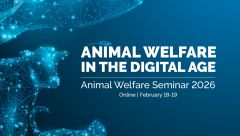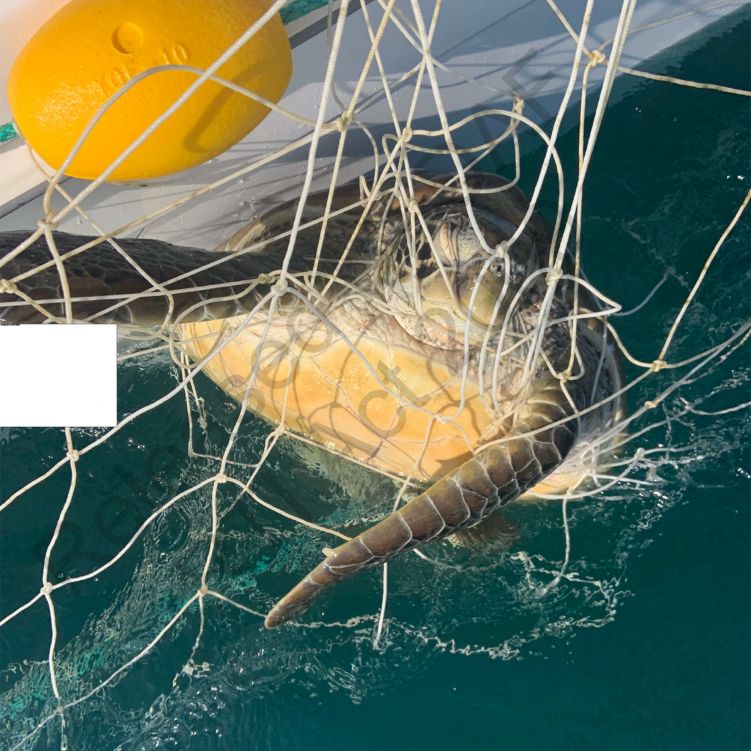Hidden under the surface in seas across Australia’s [eastern] coastline, marine animals of many species are suffering out of sight, entangled in shark nets that cause injury and prolonged deaths, or caught by drumlines. Not only do these methods pose serious welfare risks for the shark species they target, they’re also a danger to the vast array of other marine animals that call the ocean home and who also become trapped by these nets in alarming numbers.
Sharks are sentient and intelligent marine animals, who play a vital role in our ecosystem. Most shark species pose little threat to humans, and the odds of shark encounters increasing are more likely connected to human population growth frequenting coastal areas rather than sharks becoming more dangerous or more plentiful.
While the dangers of shark incidents should not be discounted, the number of incidents remains low (on average 20 incidents involving injury, 7 encounters where the person was uninjured, and 2.8 deaths per year), and the current methods aimed to prevent them appear to be doing much more harm than good.
The animal welfare cost
A shark net is up to 150m long (New South Wales) and can be up to 183m long (Queensland), 6m deep, and set in 12m deep water. They’re used in an effort to protect beach goers, but they are relatively small and do not fully enclose the designated area. Furthermore, the nets are indiscriminate, they can entangle and potentially kill any marine animal that encounters them. The result is the trapping, suffering and death of mainly non-target species, including dolphins, rays, turtles, seals, endangered hammerhead sharks and other threatened or protected species.
In NSW, shark nets are removed during whale migration season, but in Queensland's shark nets are installed year-round, resulting in marine animal entanglements during this time. Just this year at the start of the migration season a distressed humpback whale had to be rescued from an entangled shark net off Kirra Beach, with rescuers predicting more rescues to come.
A 'drumline' is a baited shark fishing-hook, hanging from a buoy, that aims to attract and catch sharks. 'Traditional drumlines', also known as lethal drumlines, or catch-and-kill drumlines, are designed to hook and kill animals. Like shark nets, drumlines often entangle non target animals such as dolphins, turtles and smaller sharks. Despite SMART drumlines, which alert authorities to attend to caught animals, once caught these animals often suffer injuries and stress or a prolonged death.
Neither shark nets nor drumlines prevent targeted sharks from swimming over, under or around them, giving a false sense of security for beach goers.
Destruction of marine life
Now in a concerning development, the Queensland Government is set to invest $88.28 million to expand the state’s Shark Control Program (QSCP) pledging more nets and more drumlines across Queensland beaches. The new plan – which will commence in July - combines increasing the current measures of shark nets and drumlines along with SMART drumlines and research into new, less invasive technologies. It’s a move widely criticised by experts and conservationists, who warn this aggressive approach will surely result in increased suffering and death for Queensland’s marine life.
The Government’s announcement comes despite findings from an independent review by KPMG, which noted that mortality of non-target animals had increased under the current program and that existing shark control equipment “falls short of desired ecosystem goals”. The report recommended alternative strategies should be explored to reduce environmental harm.
It’s a dangerous escalation of a program that was already raising serious welfare and environmental issues due to the number of marine animals maimed and killed by the current prevention methods. In 2024 alone, Queensland’s shark nets and drumlines captured 1,639 marine animals, including dolphins, turtles, rays, whales and non-target shark species. Of these, more than 980 died, often from drowning or severe injuries sustained after entanglement.
To expand the use of these methods, which bring such a significant cost to marine life, seems outdated and out of touch. In this day and age when there is so much knowledge available about the importance of protecting marine animals, there should be encouragement of progressive technologies that minimise harm and allow humans and marine life to co-exist.
Nets out now!
The existing shark nets have been in place along Australia’s east coast since 1937, and almost one hundred years later, state governments continue to rely on these harmful and outdated methods.
Public safety is important and should be taken seriously, but we know there are more sophisticated alternatives that are better at protecting marine animals and mitigating shark incidents more humanely. These have already been developed and implemented in some areas, including tagging and tracking alert systems, patrols and surveillance, sonar systems, drone surveillance, swimmer education and eco barriers. If we are to be a nation with a progressive stance on animal welfare surely it would make sense to invest in the newer, more effective technologies that cause less harm to our already fragile marine ecosystems.
Entering the ocean will always come with an inherent risk of a shark encounter, as the ocean is their home and their natural environment. However, there are many reasons why we must progress from relying on shark nets and drumlines as the main strategy for swimmer safety. Alongside the abovementioned alternatives, encouraging swimmers to be aware of their surroundings, and following the advice of beach patrol guides and marine experts can go a long way in ensuring their safety while coexisting with marine life.







